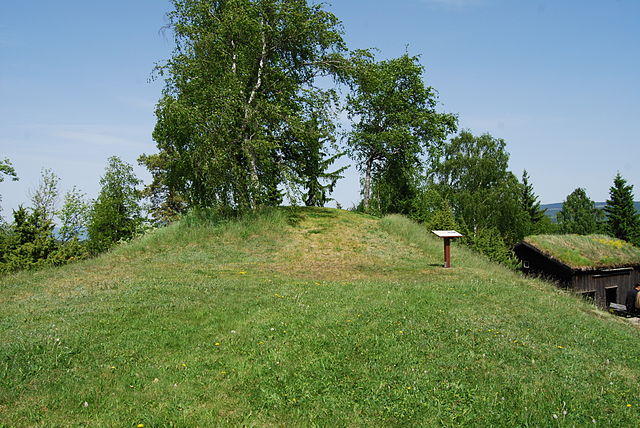Nordic thaumaturgy
A piece of king for a good harvest

One of the 4 burial mounds where Halfdan's limbs were buried, Halvdanshaugen (Norway) - wikicommons
Halfdan “the Black” (820-863) was, among the many kings who ruled and divided Norway at the time (his son Harald “Fairhair” would later unify it), the most successful in securing abundant harvests, as noted in the Heimskringla (1225): “the one who had the greatest fortune in the harvests.” Upon his death, rather than being buried in a single location, his body was quartered, with each part interred under a mound in one of Norway’s four main districts. This was done because “the possession of the body – or part of it – seemed to those who obtained it to offer hope for good harvests.”
This post-funeral practice of sharing a revered body or its parts to ensure blessings or healing – attributed to Halfdan’s successful harvests during his reign, which people hoped would continue after his death – bears a strong resemblance to later practices by certain monarchs (like Philip IX of France or Henry III of England). These kings, in processions or sacred rituals, would lay hands on afflicted subjects (often those with scrofula) as an act of healing, drawing thousands of subjects. This practice, which came to be known as “thaumaturgy,” and its practitioners as “thaumaturge kings,” became a prerogative of the ruling dynasties of England and France, linked by common ancestors such as William “the Conqueror,” Duke of Normandy and later King of England. Scrofula, a condition with a high rate of natural recovery, only strengthened the belief that a monarch’s healing touch had miraculous effects, embedding the practice deeply among their subjects.
These practices, particularly the veneration of body parts as relics, were rooted in Christian tradition, yet they have parallels in similar beliefs and customs of “pagan” origin prevalent in Northern Europe. One such example is the veneration of the limbs of the Norse king Halfdan.
Marc Bloch, Kings-miracle workers, Russo, 2018
Snorri Sturluson, Heimskringla, Passerino, 2019
2025-05-28
Salvatore Ciccarello
